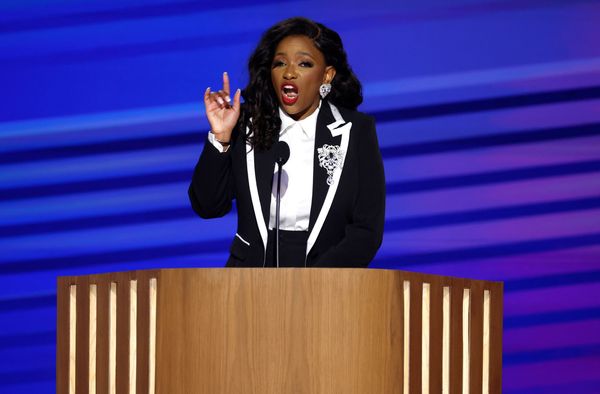
Coupledom, for the 22-year-olds in Naoise Dolan’s debut, Exciting Times, is a fraught endeavour that can at best grant you temporary reprieve from the terror of your own brain and at worst lead to your complete annihilation. The slightly older pair at the centre of her new novel, The Happy Couple (they aren’t), are no longer spending most of their energies in relationships tallying the score. Now they linger on the qualities they love in their partners: his attention to detail; her love of music. Though the engagement that sparks this sharp-eyed marriage plot is almost an accident, the result of a passive-aggressive game of chicken gone too far, they will see it through. To do otherwise would require them to “share feelings”, which they do not do. “Have you met Irish people?”
It begins in Dublin, with a triangle. Celine is an aloof concert pianist with self-destructive tendencies living in the world of abstraction; her boyfriend Luke’s destructiveness tends to ricochet on to the people he professes to love. Maria, Celine’s ex, is intellectually and erotically a better match for her but interpersonally hard work. If an engagement pulls two co-conspirators into a seemingly airtight plot – everything hurtling towards the main event – in The Happy Couple, other people trouble the narrative’s unfolding.
Things first go awry when Maria attends the engagement party at Celine’s aunt’s house in London. Maria’s ambivalence about the marriage is shared by Phoebe, Celine’s cynical younger sister and bridesmaid, who has a “self-diagnosed anxious attachment style, self diagnosed avoidant attachment style”. It’s also shared by the best man, Luke’s former lover and City boy Archie, who dulls the pain of his secret love for Luke through a variety of recreational drugs.
The characters are humorously and engagingly drawn, but I wondered whether they would remain mere archetypes: there is also Vivian, art historian (clever, rises above the drama); and Shawn, investment banker (the worst). These fears were mostly allayed in later chapters, particularly with the light but affecting friendship Phoebe and Archie develop over a long night out in London. Walking by a canal underneath the early morning sun, Phoebe asks Archie: “Do you ever want to die?” Archie replies: “I used to. I think what changed wasn’t anything around me, but how I trained myself to notice things.”
Most of the characters in the novel are queer, but the spectre of heterosexuality bears down on them like a boring yet unignorable weight. In Exciting Times, politics was expressed by its disaffected protagonist articulating Marxist bon mots to bourgeois friends in the godless expatriate haunts of Hong Kong. The Happy Couple introduces characters evaluating the world with a sincerity and despair that feels new.
Luke argues that even Jane Austen, in all her genius, struggled to envision an ending in which a self-satisfied man did not win a woman; Celine’s mother marvels at how all the historic achievements of feminism can’t stop young women today, brimming with vitality and promise, from undoing themselves for careless men incapable of love. One could vilify these men, but the novel suggests that in a world that constantly rearranges itself around the needs of guys like Luke, Luke never has to confront himself for what he is, and never really has to grow.
Sometimes the cool, knowing reiteration of familiar truths – the inequalities between men and women; the ravages of capitalism; the alienating terror of being alive – has a deadening effect, draining the energy that made these frustrations feel urgent. Faced with the current crop of novels about clever self-loathing young people eyeing a hostile and unrelenting world, the reader can feel an initial twinge of recognition, followed by an emptiness as they wonder: “Is this it?”
The characters in this kind of book are often described as self-aware, but I am beginning to wonder if that is the right word. It seems more like fear, rather than awareness, that makes a person unable to step outside the self; that moves them to regard the world as beyond wonder and transformation. This fear may be self-protecting, but it is also limiting. Witnessing yet another conversation filled with semi-ironic intellectual showboating, Phoebe thinks: “Celine’s friends were all like that – full of yelling and laughter and wild gesticulations when it came to theoretical disputes, but with zero ability to talk about each other, the space between their bodies, the breath they shared.” With both its lead characters mired in this isolating, defensive world and grasping for a way out, The Happy Couple rises towards an affecting ending that asks what illusions and armour one has to shed in order to feel free.
• The Happy Couple is published by W&N (£16.99). To support the Guardian and Observer, order your copy at guardianbookshop.com. Delivery charges may apply.







